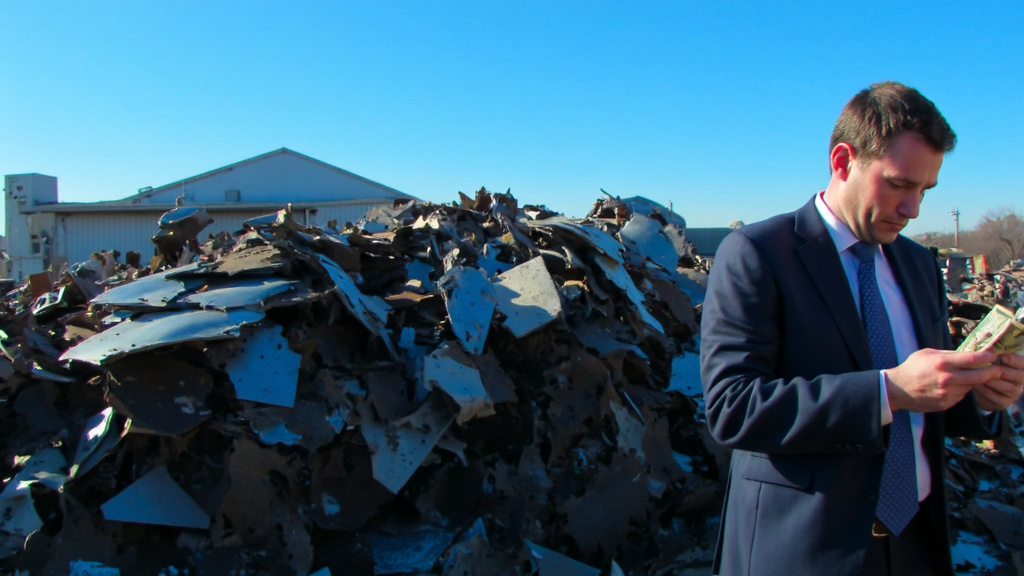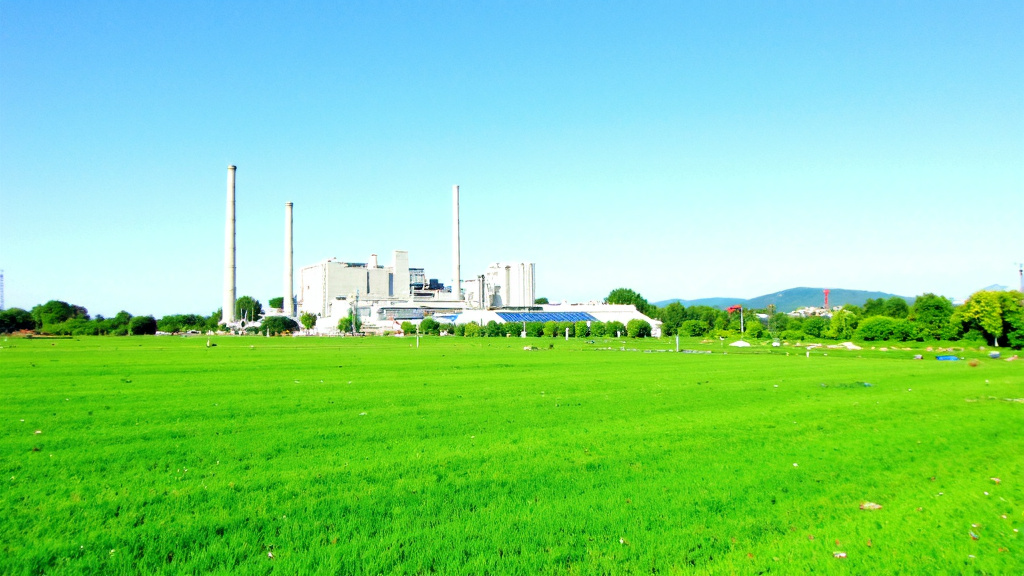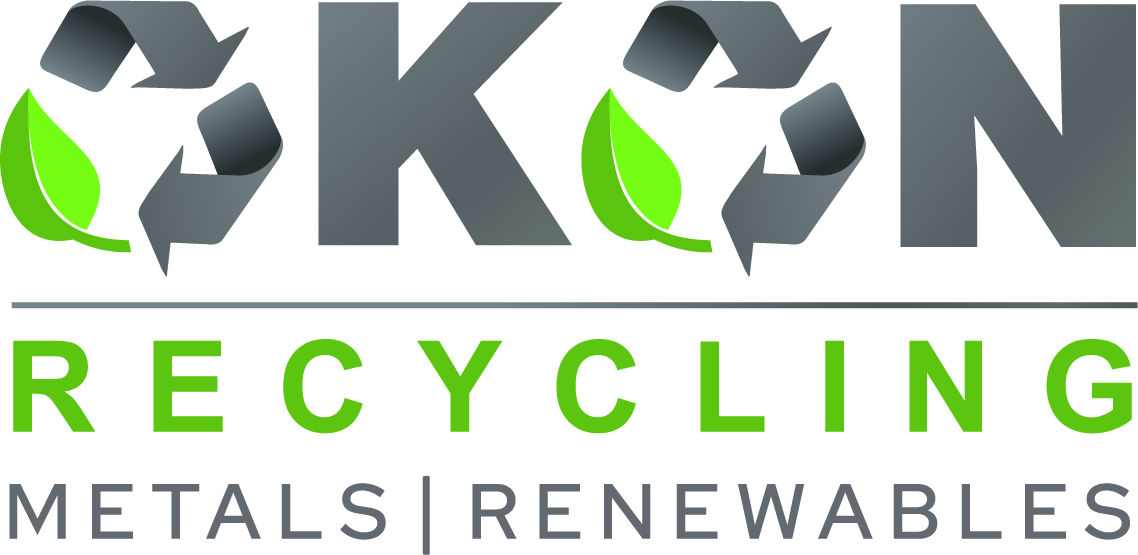5901 Botham Jean Blvd, Dallas, TX 75215
Understanding Scrap Metal Recycling Cost Savings
April 16, 2025In the United States, scrap metal recycling generates up to $90 billion in economic activity annually, making it a significant environmental practice in our economy. This expanding sector not only diverts materials from landfills but also creates a robust economic engine benefiting businesses, communities, and consumers.
Metal recycling is an intersection where environmental stewardship and fiscal responsibility align. Participation in scrap metal recycling programs contributes to energy conservation and reduces raw material costs. For example, recycling aluminum requires only 5% of the energy needed to produce it from virgin ore.
Beyond financial benefits, scrap metal recycling creates jobs, supporting thousands across collection, processing, and manufacturing sectors. As material costs rise globally, recycling provides a strategic advantage by offering manufacturers more affordable inputs, helping stabilize consumer prices and fostering a sustainable economic future.
How Does Scrap Metal Recycling Save Money for Businesses?

Scrap metal recycling offers businesses ways to save costs while supporting environmental goals. Companies in manufacturing, construction, and industrial sectors can turn what was once waste into valuable resources, creating significant financial benefits.
Reduced Raw Material Expenses
By using recycled metals instead of virgin materials, businesses can cut production costs. The processes of mining, extraction, and refining virgin metals increase expenses. Recycled materials require much less processing, translating to immediate savings.
Recycled metals help companies stabilize budgets against the often volatile global metals market. While virgin material prices can fluctuate with global supply chain disruptions, recycled materials tend to offer more consistent pricing structures, allowing for better long-term financial planning.
Lower Waste Disposal Costs
When businesses implement scrap metal recycling programs, they reduce their waste streams, leading to decreased trash pickup services and lower disposal fees. For manufacturing facilities that generate substantial metal waste, these savings can be significant.
Many municipalities and waste management companies charge premium rates for industrial disposal, especially for heavy materials like metals. By diverting these materials to recycling programs, businesses avoid these escalating disposal costs while potentially reducing their environmental compliance expenses.
Revenue Generation Opportunities
The most compelling financial benefit of scrap metal recycling is the potential to generate new revenue streams. Instead of paying to dispose of metal waste, businesses can sell these materials to recycling facilities, turning a liability into an asset.
The value of scrap metal varies based on type, quality, and market conditions. High-demand metals like copper, aluminum, brass, and stainless steel typically command higher prices. Manufacturing facilities, construction companies, and automotive businesses often find that their “waste” materials hold significant value when properly sorted and recycled.
Enhanced Brand Image and Market Position
While less direct than immediate cost savings, businesses that participate in scrap metal recycling often enhance their brand reputation. In today’s environmentally conscious marketplace, sustainable practices can attract environmentally aware customers, investors, and potential employees.
This improved market position can lead to increased sales, better investor relations, and reduced recruitment costs. Many businesses find that their recycling initiatives become valuable components of their marketing and corporate social responsibility programs, creating indirect but meaningful financial benefits.
By implementing comprehensive scrap metal recycling programs, businesses contribute to conservation efforts and position themselves for improved financial performance through multiple channels of cost reduction and potential revenue generation.
What Are the Environmental Benefits That Lead to Cost Savings?

Scrap metal recycling offers substantial environmental benefits that translate into economic savings. When businesses and municipalities focus on metal recycling, they protect natural resources and reduce operational costs. This environmental-economic synergy supports the integration of recycling into waste management strategies.
Energy conservation is a significant cost-saving advantage. The Institute of Scrap Recycling Industries states that recycling steel saves up to 74% of the energy needed to produce new steel from raw materials. Aluminum recycling conserves about 95% of the energy required for virgin production. These energy savings lower manufacturing costs and shield against energy price fluctuations.
Reducing mining operations is another vital environmental and economic benefit. Metal extraction involves extensive land disturbance, heavy machinery, and transportation infrastructure, all with substantial financial and environmental costs. Recycling one ton of steel conserves approximately 2,500 pounds of iron ore, 1,400 pounds of coal, and 120 pounds of limestone, significantly cutting extraction expenses.
Greenhouse gas reduction provides environmental protection and potential cost savings through carbon credit systems and regulatory compliance. The US Environmental Protection Agency reports that recycling one ton of steel reduces greenhouse gas emissions by 2.1 metric tons of carbon dioxide equivalent. As global carbon regulations tighten, businesses with lower emissions profiles gain competitive advantages through reduced carbon taxes and improved regulatory standing.
Landfill diversion offers another cost reduction avenue. Rising landfill tipping fees due to limited capacity and stricter environmental regulations mean that keeping metal out of waste streams generates immediate savings. Additionally, many municipalities and waste management companies offer rebates or reduced collection rates for businesses with effective recycling programs.
Water conservation is a less obvious but equally important benefit. Metal production from raw ore requires significant water resources for processing and cooling. Recycling metal dramatically reduces water consumption—an increasingly valuable resource with rising costs in many regions. This water efficiency leads to lower utility expenses and better protection against drought-related price increases.
How Does Scrap Metal Recycling Impact Local Economies?
Scrap metal recycling acts as a significant economic driver within local communities. Beyond environmental benefits, the industry creates substantial financial impacts that permeate regional economies. According to the Institute of Scrap Recycling Industries, the recycling industry contributes over $105 billion in economic activity annually across the United States.
Job Creation Across Multiple Sectors
The scrap metal industry generates diverse employment opportunities across the recycling supply chain. From collection specialists and truck drivers to processors and administrative staff, recycling facilities provide jobs for workers with various skills and backgrounds.
These opportunities aren’t confined to large operations. Small and medium-sized scrap yards offer roles ranging from entry-level sorting to specialized positions requiring expertise in metal identification, machinery operation, and business management. Each job strengthens the local workforce, increasing disposable income that circulates through community businesses.
These jobs are particularly valuable for their resilience—scrap metal recycling continues regardless of economic conditions, providing stable employment even during downturns in other industries.
Business Ecosystem Stimulation
Scrap metal recycling facilities act as hubs supporting numerous adjacent businesses. Local contractors, electricians, demolition companies, and transportation services benefit from partnerships with recycling operations. These relationships create a symbiotic business network where materials flow efficiently, and economic benefits are widely distributed.
Additionally, manufacturing operations gain access to lower-cost recycled materials, reducing production expenses and enhancing competitiveness. Construction companies benefit from more affordable building materials, enabling them to undertake more projects within budget constraints. This cascading effect strengthens the regional business landscape.
Tax Revenue Generation
The fiscal impact of scrap metal recycling extends directly to public services through substantial tax contributions. Recycling facilities pay property taxes, income taxes, and business fees that support local government operations. Their employees contribute through income tax payments, while the broader economic activity generates sales tax revenue.
This tax income funds essential community services such as schools, emergency services, public transportation, and infrastructure projects. Without these contributions, many municipalities would face significant budget shortfalls requiring either service reductions or tax increases for residents.
Environmental Savings with Economic Benefits
The environmental advantages of scrap metal recycling translate directly into economic savings for communities. By diverting metal from landfills, municipalities reduce waste management costs and extend the operational lifespan of disposal facilities. The reduced pollution from minimized mining and refining activities lowers public health expenses and environmental remediation costs.
These environmental improvements enhance community livability, potentially increasing property values and attracting new businesses seeking locations with strong sustainability credentials. This creates a positive feedback loop that further strengthens the local economy.
Conclusion: The Future of Scrap Metal Recycling and Cost Savings

Scrap metal recycling is a key component of sustainable resource management, providing significant economic and environmental benefits. The recycling process reduces production costs across industries, with recycled steel comprising 40% of global steel production. These efficiencies extend beyond manufacturing, adding value throughout the supply chain while significantly lowering energy consumption and carbon emissions.
Technological advancements, such as AI-powered sorting systems and robotics, are enhancing metal recovery efficiency and cost-effectiveness. These innovations, alongside increasing corporate sustainability commitments and stricter environmental regulations, position scrap metal recycling at the crossroads of economic opportunity and environmental responsibility. The future offers immense potential for businesses, municipalities, and individuals to achieve greater cost savings while supporting a circular economy.
Interested in how scrap metal recycling can enhance your organization’s sustainability goals and financial performance? Contact Okon Recycling at 214-717-4083 for solutions tailored to your specific recycling needs.
